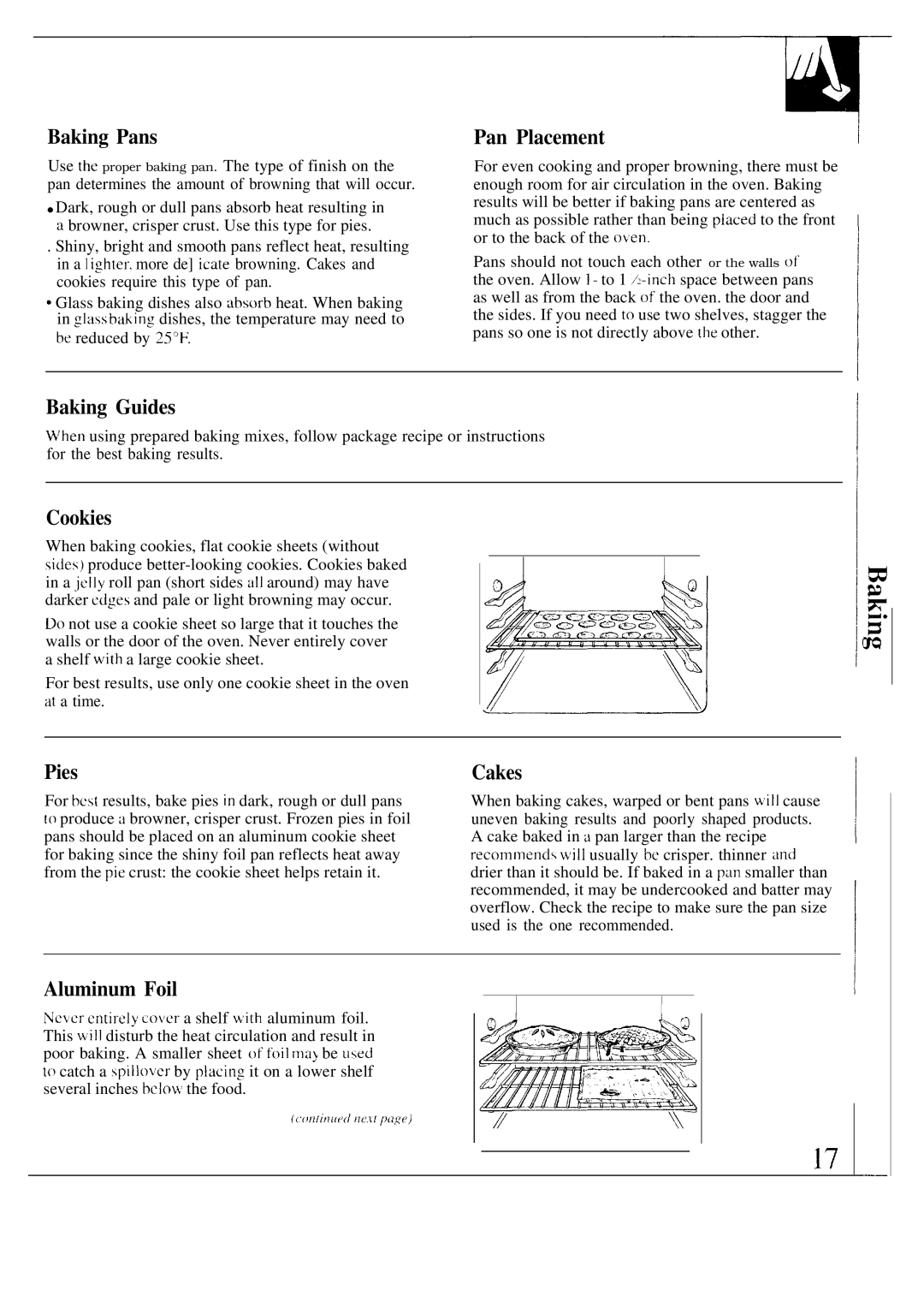
Baking Pans
Use the proper baking pan. The type of finish on the pan determines the amount of browning that will occur.
●Dark, rough or dull pans absorb heat resulting in a browner, crisper crust. Use this type for pies.
. Shiny, bright and smooth pans reflect heat, resulting in a ![]() 1 ighter. more de] icate browning. Cakes and cookies require this type of pan.
1 ighter. more de] icate browning. Cakes and cookies require this type of pan.
Q Glass baking dishes also absorb heat. When baking in ,gIaSS baking dishes, the temperature may need to
be reduced by 25°F.
Pan Placement
For even cooking and proper browning, there must be enough room for air circulation in the oven. Baking results will be better if baking pans are centered as much as possible rather than being placed to the front or to the back of the o~ren.
Pans should not touch each other or the walls of the oven. Allow 1- to 1
Baking Guides
lVhen using prepared baking mixes, follow package recipe or instructions for the best baking results.
Cookies
When baking cookies, flat cookie sheets (without sides) produce
Do not use a cookie sheet so large that it touches the walls or the door of the oven. Never entirely cover a shelf with a large cookie sheet.
For best results, use only one cookie sheet in the oven at a time.
Pies
For best results, bake pies in dark, rough or dull pans lo produce a browner, crisper crust. Frozen pies in foil pans should be placed on an aluminum cookie sheet for baking since the shiny foil pan reflects heat away from the pie crust: the cookie sheet helps retain it.
Cakes
When baking cakes, warped or bent pans will cause uneven baking results and poorly shaped products. A cake baked in a pan larger than the recipe recommend~ will usually be crisper. thinner and drier than it should be. If baked in a pan smaller than recommended, it may be undercooked and batter may overflow. Check the recipe to make sure the pan size used is the one recommended.
Aluminum Foil
Never entirely cover a shelf with aluminum foil. This will disturb the heat circulation and result in poor baking. A smaller sheet of foil ma~ be used 10 catch a spillovcr by piacing it on a lower shelf several inches belo~’ the food.
I
